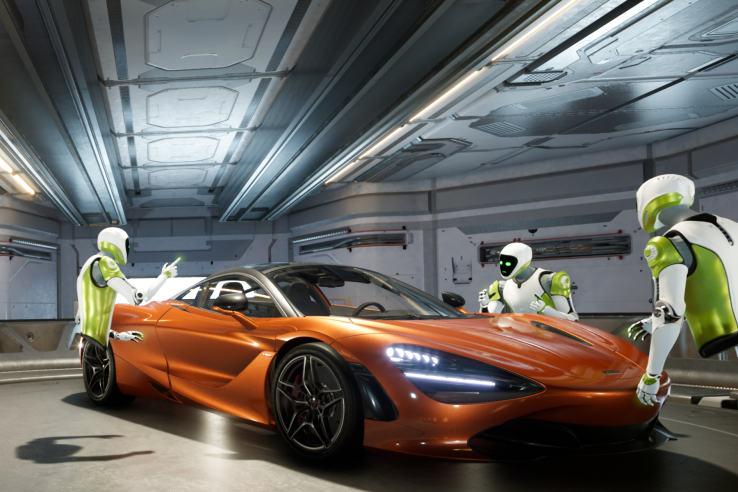Nvidia has introduced a virtual reality system Holodeck, intended for sharing

Nvidia’s chief executive officer, Jensen Juan, once told me that one of the things that most excited him in thinking about the technologies of the future in the company is the desire to finally bring the Holodeck system to mind - and now, this is exactly what Nvidia represents as its new photorealistic VR-platform for designers and developers.
Nvidia Holodeck (yes, the real name) - developed by the eminent manufacturer of graphics chips "intellectual platform of virtual reality", which allows you to combine shared virtual environments that have emulation of "real" physics, with highly detailed models built using photorealistic graphics and on a scale of one to-one with real objects. However, it is not a tool that allows you to pose as Captain Picard, as well as otherwise live life in fantasy worlds, noir detectives or films about pirates; Nvidia's Holodeck is designed to make it easier for designers to prototype, analyze and fit structures in order to bring the finished product to the market as quickly as possible.
Holodeck is also prepared for the design of autonomously controlled equipment, since it is possible to train "bots" and place them in virtual space to check how "artificial intelligence" will behave in working conditions in the real world, including virtual "operators" and "abnormal situations" , as well as “personnel”, which can interact with any autonomous mechanisms or objects that are in the prototyping stage, before these objects are built “in hardware”.
Shortly before that point, Nvidia had already won prizes from leading architects, NASA engineers, and leading designers who tested the project at the pre-release stage. Now the project will be available “in preliminary access” to a wider audience, with the aim of introducing further improvements in its results.
Tools for collaborative development in VR are becoming very fashionable among automakers, who are increasingly in the initial stages of vehicle design resorting to virtual modeling. Perhaps Nvidia, with its experience both in graphics and in creating AI, will be able to give another impetus to the widespread use of simulated realities in practice, since, apart from the automotive industry, there are many other areas for using such a platform.
All Articles